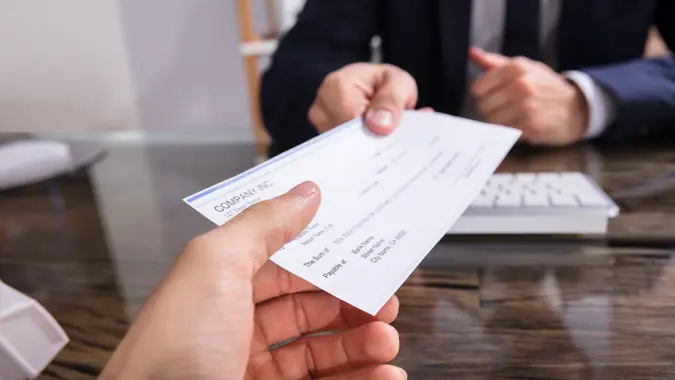Suze Orman Says No to Dining Out To Save Your Money

Commitment to Our Readers
GOBankingRates' editorial team is committed to bringing you unbiased reviews and information. We use data-driven methodologies to evaluate financial products and services - our reviews and ratings are not influenced by advertisers. You can read more about our editorial guidelines and our products and services review methodology.

20 Years
Helping You Live Richer

Reviewed
by Experts

Trusted by
Millions of Readers
Suze Orman is one of the most famous financial advisors around. A respected motivational speaker, writer, producer, columnist and “New York Times” bestselling author, Orman believes that you should control your money — not the other way around. When it comes to saving money on everyday things, she says no to dining out.
Explore how you save money by eating at home instead of dining out.
Penny-Pinching on Food
Frugality, or spending as little money as possible, is sometimes called penny-pinching. Orman refuses to eat out anytime or anywhere and thinks it’s a big waste of money. If you’re unsure of how to save money in the kitchen, here are some useful tips:
Use What You Have First
You save time and money by keeping your pantry stocked with essential nonperishable food items. You’ll shop for groceries less frequently and be less tempted to pick up fast food because there’s nothing at home to cook. Take advantage of grocery-store promotions and stock up when your favorite items go on sale.
Pro tip: Check the items you consume regularly and use the “first in, first out” storage method.
Check Out the Unit Pricing
Comparing unit pricing in grocery stores can save you money on food. It’s as easy as checking the price tag on the shelf, calculating the unit price and comparing different brands and sizes for the best deal. You may discover you can save more by switching brands or buying bulk at a big-box store.
Unit pricing is simply the cost of an item per unit of measurement, such as ounces, quarts or pounds. Finding the best buy using unit pricing takes only a few steps:
- Review the shelf tag: This label shows the product’s size, the total price of the item and sometimes even its price per unit.
- Calculate the unit price: If the per-unit price isn’t already listed on the shelf tag, you can divide the item’s total price by its size. For example, if a 12-ounce box of macaroni and cheese costs $2.49, the unit price is $0.208 per ounce.
- Compare different types, brands and sizes of the same product: Instead of a shelf-stable box of macaroni and cheese, compare a frozen box of the same size. Larger-sized packages are often cheaper on a per-unit basis.
Prepare Lunch at Home
Eating a well-balanced, healthful lunch can fuel your brain and body during a busy day. Instead of heading out to the nearest deli or pizza parlor, try these tips for preparing your lunches at home and packing them on the go:
- Include some protein. To feel full longer, try a sandwich made with the grilled chicken left over from last night’s dinner.
- Eat your fruits and vegetables. An array of colorful fruits and veggies will give your body the essential vitamins and minerals it needs. Buy fresh, in-season vegetables for the most nutrition. Frozen and canned vegetables will also do the job if you can’t find fresh vegetables to your liking.
- Get your grains in. Whole grains are highly nutritious. Swap out white rice and white pasta for heartier alternatives like brown rice and whole-wheat pasta. They’re about the same price as their counterparts but are typically more healthful.
The Cost of Dining Out
Although Orman’s money management advice is highly regarded, most Americans habitually dine out. Eating out is a big part of American culture because it’s convenient, provides a break from cooking and serves as a form of socialization. According to U.S. Foods, the average person eats out about three times per month and orders food delivery approximately five times per month.
How much does eating out cost? Americans spend $166 per person dining out each month, with men spending 19% more than women. Tipping is another cost to consider. Most people believe that 15% is still the standard, while some believe the tip amount should depend on the quality of service.
Consider Your Priorities
Although Orman considers eating out to be a huge waste of money, she seemingly splurges on other life essentials. For instance, she has a residence in the Bahamas and travels on a private plane [9].
Orman recommends finding a balance that works for your financial goals and priorities and focusing on living below your means [9]. It’s simply a matter of spending money on what’s most important to you.
 Written by
Written by  Edited by
Edited by 

























